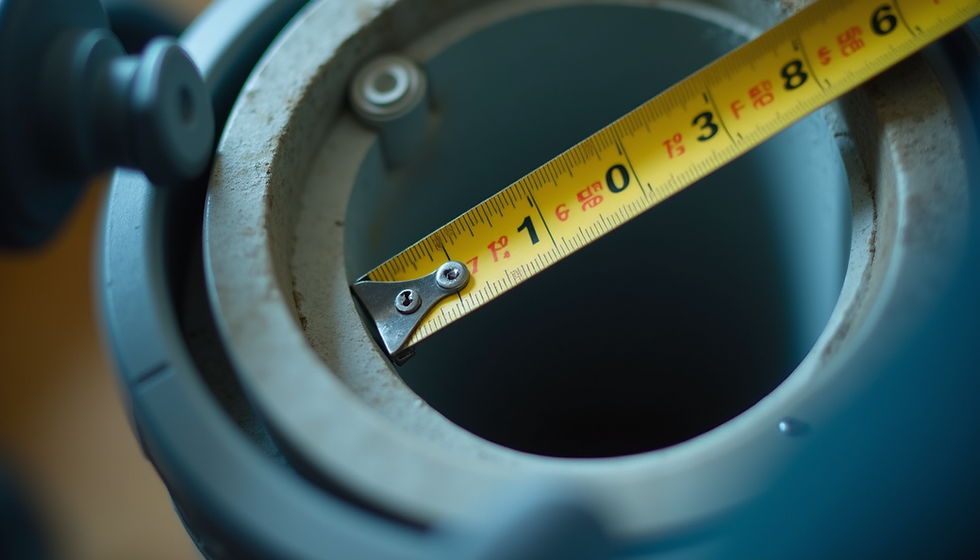Mica Bands vs Ceramic Bands Understanding the Key Differences in Band Heaters
- Heat Tech Systems
- Jul 23
- 4 min read
When it comes to industrial heating solutions, choosing the right band heater is crucial. Two popular options are mica band heaters and ceramic band heaters. Each type has unique strengths and weaknesses, making it important for buyers to grasp their differences. This guide compares essential factors such as temperature tolerance, life expectancy, watt density, customization options, and pricing – helping you make a well-informed choice.
Temperature Tolerance
A key difference between mica and ceramic band heaters is their temperature tolerance.
Ceramic band heaters can handle much higher temperatures than mica heaters. Ceramic heaters can reach up to 1200°F, while mica heaters operate at a maximum of 800°F. This capability makes ceramic heaters ideal for high-heat applications, like plastics processing, where temperatures soar. For instance, in the plastic extrusion industry, maintaining optimal heating can improve production quality and speed. In contrast, mica heaters are better suited for tasks that require moderate heating, such as warming oils or waxes.
Choosing the right heater type is crucial for maintaining equipment integrity and ensuring safe operations.
Heater Life Expectancy
Life expectancy is another critical factor to consider.
Ceramic band heaters typically outlast mica band heaters. The construction of ceramic heaters plays a significant role in their longevity. They feature coiled resistance wire embedded in ceramic blocks, also called knuckles, which significantly reduces oxidation. For example, a ceramic band heater can last 2 to 3 times longer than a mica heater in a continuous operation environment, making it ideal for industries where downtime is costly.
By contrast, mica heaters use thin resistance ribbons that can oxidize more quickly, leading to a shorter lifespan. In manufacturing settings, where every minute of downtime can lead to thousands of dollars in losses, investing in ceramic heaters for long-term use could prove beneficial.
Watt Density
Watt density is a vital metric for assessing how much power a heater generates over a specific area.
Mica band heaters usually have higher watt density than ceramic heaters. This is due to the installation of the resistance ribbon within the mica structure. The ribbon, when tightly clamped between mica layers, promotes efficient heat transfer to the heater's exterior surfaces. As a result, mica heaters can be particularly effective in compact spaces or situations where rapid heating is needed—like in small-scale injection molding processes.
However, ceramic band heaters might offer lower watt densities but excel in providing consistent heating over larger surfaces. Therefore, understanding your heating requirements—such as the need for quick heat versus steady, even heat—is essential in making your decision.
Customizability
The level of customization is another significant factor when choosing between mica and ceramic heaters.
Mica band heaters are particularly adaptable. They can be tailored to various shapes and sizes, allowing for a wide range of applications. For example, if a machine requires a uniquely shaped heater to fit into a tight space, mica bands can be manufactured to meet those specific needs.
On the other hand, ceramic band heaters generally have limitations in their dimensions. They are usually manufactured in 1/2-inch width increments, which can restrict their use in applications that demand precise sizing. Hence, if your operation requires tailored dimensions, mica band heaters may offer considerable flexibility.
Pricing Differences
When examining pricing, you'll find that ceramic band heaters typically come with a higher price tag.
This cost difference primarily results from the materials used. The ceramic knuckles in ceramic band heaters are more expensive than the thin mica sheets used in mica heaters. For instance, while a standard mica band heater may cost around $150 to $200, a comparable ceramic heater could range between $250 and $400.
However, it's essential to weigh this upfront cost against the expected lifespan and performance. Mica heaters might be cheaper initially, but ceramic heaters could demonstrate better long-term value due to their durability and ability to withstand higher temperatures. In high-demand settings, the return on investment for ceramic heaters could justify their higher price, especially if reliability and longevity are priorities.
Summary of Key Differences
Here's a quick overview of the primary differences between mica and ceramic band heaters:
| Feature | Mica Band Heaters | Ceramic Band Heaters |
|-----------------------|----------------------------|------------------------|
| Maximum Temperature | 800°F | 1200°F |
| Life Expectancy | Generally shorter | Generally longer |
| Watt Density | Higher | Lower |
| Customizability | More customizable | Limited options |
| Pricing | Less expensive | More expensive |
Selecting Your Ideal Band Heater
Picking the right band heater is vital for high-performance heating in any industrial application. As outlined, both mica and ceramic heaters excel in specific scenarios.
Before making your choice, think about factors like operational temperature range, expected heater lifespan, watt density needs, customization requirements, and budget. By understanding these elements, you can choose the band heater best suited to your needs, leading to enhanced efficiency and performance in your operations.
Final Thoughts
In conclusion, mica band heaters and ceramic band heaters each come with their own advantages and limitations tailored to various applications. Recognizing the differences in temperature tolerance, life expectancy, watt density, customization, and pricing is vital for making an informed choice.
Investing in the appropriate band heater can significantly boost productivity, minimize downtime, and enhance energy efficiency in industrial processes. Whether you opt for mica or ceramic heaters, prioritize quality solutions that align with your specific heating needs for the best long-term results.




Comments